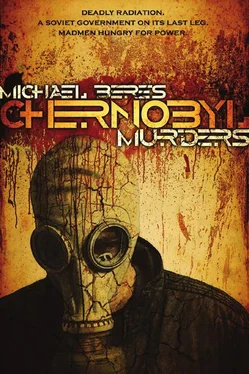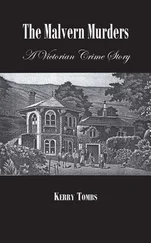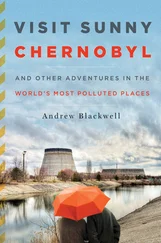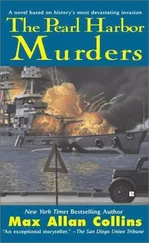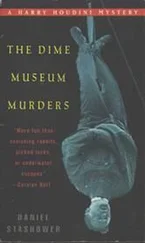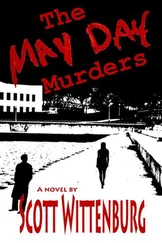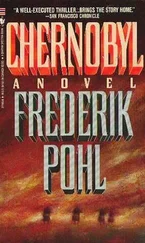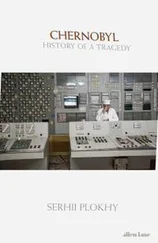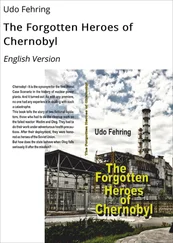Michael Beres - Chernobyl Murders
Здесь есть возможность читать онлайн «Michael Beres - Chernobyl Murders» весь текст электронной книги совершенно бесплатно (целиком полную версию без сокращений). В некоторых случаях можно слушать аудио, скачать через торрент в формате fb2 и присутствует краткое содержание. Жанр: Триллер, на английском языке. Описание произведения, (предисловие) а так же отзывы посетителей доступны на портале библиотеки ЛибКат.
- Название:Chernobyl Murders
- Автор:
- Жанр:
- Год:неизвестен
- ISBN:нет данных
- Рейтинг книги:4 / 5. Голосов: 1
-
Избранное:Добавить в избранное
- Отзывы:
-
Ваша оценка:
- 80
- 1
- 2
- 3
- 4
- 5
Chernobyl Murders: краткое содержание, описание и аннотация
Предлагаем к чтению аннотацию, описание, краткое содержание или предисловие (зависит от того, что написал сам автор книги «Chernobyl Murders»). Если вы не нашли необходимую информацию о книге — напишите в комментариях, мы постараемся отыскать её.
Chernobyl Murders — читать онлайн бесплатно полную книгу (весь текст) целиком
Ниже представлен текст книги, разбитый по страницам. Система сохранения места последней прочитанной страницы, позволяет с удобством читать онлайн бесплатно книгу «Chernobyl Murders», без необходимости каждый раз заново искать на чём Вы остановились. Поставьте закладку, и сможете в любой момент перейти на страницу, на которой закончили чтение.
Интервал:
Закладка:
Juli went to join Lazlo at the window and held him close. “You said it yourself, Laz. We can help more people from here.”
“I know. I simply need to consider these things occasionally.
It’s part of my melancholy. By the way, before Nina called, I spoke with Dr. Szabo.”
“What did he say?”
“He’ll pick us up in the morning for the meeting. He said we should consider relocating, perhaps to the United States. He’s arranged for visas and contacted a medical facility in New York.”
Juli and Lazlo stood together looking east, Lazlo’s arm around her, his hand resting on her abdomen.
In the distance, beyond the green of the park and the blue of the Danube, the horizon was a thin line of colorless land and sky. It was like any horizon, a magnet to any Gypsy, a reason to keep moving.
As they stood at the window, they both felt the baby’s kick.
Four months after the unit four RBMK-1000 reactor at Chernobyl exploded, Soviet officials joined with scientists from throughout the world at a meeting of the International Atomic Energy Agency in Vienna. For the most part, delegates were pleased with the openness displayed by the Soviets in detailing the causes of the accident.
Although there seemed to be many indirect factors leading to the accident, the main cause was reported to have been an ill-planned experiment at the reactor.
Design flaws were also discussed at the meeting, and Soviet officials outlined corrective measures to be performed on the other RBMK-1000 reactors in operation. Although the Soviets said some designers and high-level engineers were at fault, they praised the heroism and bravery of those who were at the site when the explosion occurred.
At the end of August 1986, the official death toll from the Chernobyl accident stood at thirty-one, and hundreds of thousands of people who had been forced from their homes faced a high risk of developing cancer in their lifetimes.
37
Present Day
Kiev, Ukraine
The Chernobyl Museum (Ukrainian National Museum “CHOR-NOBYL”) is housed in a converted fire station on Khoryvyj Pereulok Street. The museum is a plain, two-story building with arched fire-station doors. A garden memorial near the entrance has a single iconic statue seemingly in prayer. Inside, the museum feels like a church or funeral parlor, with unhurried footsteps and muted voices echoing from various exhibit rooms. Some rooms have sections of girders and metal on the ceiling, simulating the destruction inside the destroyed reactor. There are photographs of the reactor before and after the explosion, and photographs of the sarcophagus. There are photographs of the city of Pripyat and of people who were relocated, especially children. There are photographs of hundreds of vehicles abandoned in the exclusion zone. And finally, there are photographs of victims, many of whom were firemen and liquidators.
One exhibit area has a display of various protective gear used during the rescue and cleanup operations. The protective clothing is primitive by modern standards-rubber gloves, hard hats, face masks, lead vests, boots, and rubberized suits. Several face masks hang on the wall, and two are on mannequins in rubberized suits.
The face masks are made of rubber with the pallor of dead flesh.
Snouts with downward-pointing screw-on filter canisters make the mannequins into prehistoric creatures not yet ready for the technology assaulting them. Round glass eyes shine like mirrors to the souls inside the suits.
Two caretakers, a man and a woman, walk slowly from exhibit to exhibit, announcing the closing of the museum in soft voices.
The noise in the hallways increases as visitors head for the exit, walking briskly on shiny tile floors. In the main hall near the exit is an exhibit of Soviet newspaper stories from the year of the explosion. Most of the headlines concern Chernobyl. But one newspaper from January 1986 has a photograph of the U.S. Space Shuttle Challenger crew killed in the shuttle explosion. The photograph of the crew in black and white, blown up and grainy on the front page of the newspaper, is reminiscent of many other photographs in the museum. Faces from the past full of optimism and trust in twenti-eth century technology.
Little Ilonka is no longer a little girl. A quarter century has passed since she fled with her mother, Nina, and her sister, Anna, from Pripyat. As Chernobyl Museum visitors parade out the main entrance, several men of various ages glance her way. Perhaps it is a combination of Ilonka’s beauty and a reaffirmation of life that makes even women smile at her before heading down the path to the exit gate.
Lazlo and his niece Ilonka sit on a bench near the garden with its commemorative statue and silent bells. The bus from the Chernobyl tour is due in an hour, and they are early. Before coming here, they stopped for a cool drink along Khreshchatik Boulevard. It was hot when they arrived, but the late-afternoon sun has gone lower, hidden by buildings. Although the bench is still warm, the shade is welcome. Lazlo had taken off his jacket and tie earlier in the day, planning to put them back on before dinner. The red, white, and green tie, which Ilonka immediately recognized as representing the Hungarian flag, is draped on his jacket on the bench.
Ilonka is in her late twenties, a professor of mathematics at Kiev University. On their way here, she had admired Lazlo’s Sox cap so he bought her one, saying it would not only show she was a fan, but would also protect her head from the sun. Ilonka’s hair is very short.
At first he worried she had undergone recent chemotherapy, but Ilonka said she had shaved her head, along with several other university staff members, to support a physics professor who had cancer.
Ilonka’s whisper-quiet voice is a result of having her thyroid removed years earlier. The surgeon did a fine job on her sister, Anna, but when it came to Ilonka, the surgeon nicked both vocal cords. According to Ilonka, it causes no handicap, especially since she has begun using a wireless microphone and amplifier during her lectures.
Besides the Sox cap, Ilonka wears a short skirt, white blouse, medium heels, and sunglasses. Lazlo is like a proud father as he watches the passing men admiring her. During their walk to the museum, they shared family news. Ilonka’s mother, Nina, is happy on the farm in Kisbor. Anna, Ilonka’s sister, although married to a farmer in town some years back, has decided not to have children because of her radiation exposure in Pripyat after the explosion.
Bela and his wife are grandparents, the mother, Lazlo recalls, a baby during the episode at the farm in 1986. Times are hard in western Ukraine, but it is much better than it was under Soviet rule. The packages Lazlo sends from the United States are appreciated.
Although Lazlo feels more like a proud father than an uncle sitting beside Ilonka, he is not a father. A stepfather, yes, but never a father. During their walk here, he explained the details of his relationships, Ilonka saying she was much younger when she heard about Uncle Lazlo’s adventures and wanted to hear the entire story once again, especially since it involved her father, Mihaly.
In 1986, when she was a technician at Chernobyl, Juli Popovics had an affair with Lazlo’s brother, Mihaly. After Mihaly’s death at Chernobyl, Juli and Lazlo escaped from Ukraine, pursued by a mad KGB officer named Komarov. Juli carried Mihaly’s child, a girl born shortly after Lazlo and Juli married in Vienna. Lazlo and Juli named the girl Tamara, after Lazlo’s longtime friend who was murdered by Komarov. Lazlo and Juli moved to the United States and lived a happy life until Juli died of cancer at the turn of the new century. After Juli’s death, Lazlo visited Ilonka’s mother, Nina, several times. Although they were fond of one another, Nina had her life in Kisbor, and Lazlo had his sadness for his loss of Juli. Lazlo also had a life in Chicago. Raising his stepdaughter, Tamara, and watching her grow into a woman gave his life meaning.
Читать дальшеИнтервал:
Закладка:
Похожие книги на «Chernobyl Murders»
Представляем Вашему вниманию похожие книги на «Chernobyl Murders» списком для выбора. Мы отобрали схожую по названию и смыслу литературу в надежде предоставить читателям больше вариантов отыскать новые, интересные, ещё непрочитанные произведения.
Обсуждение, отзывы о книге «Chernobyl Murders» и просто собственные мнения читателей. Оставьте ваши комментарии, напишите, что Вы думаете о произведении, его смысле или главных героях. Укажите что конкретно понравилось, а что нет, и почему Вы так считаете.
